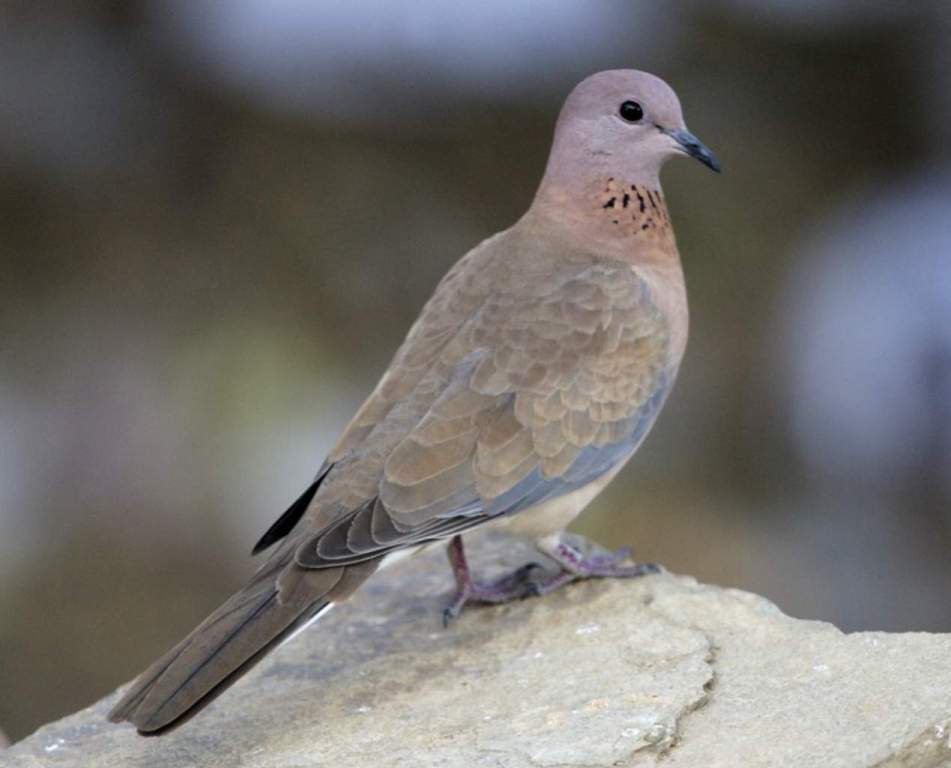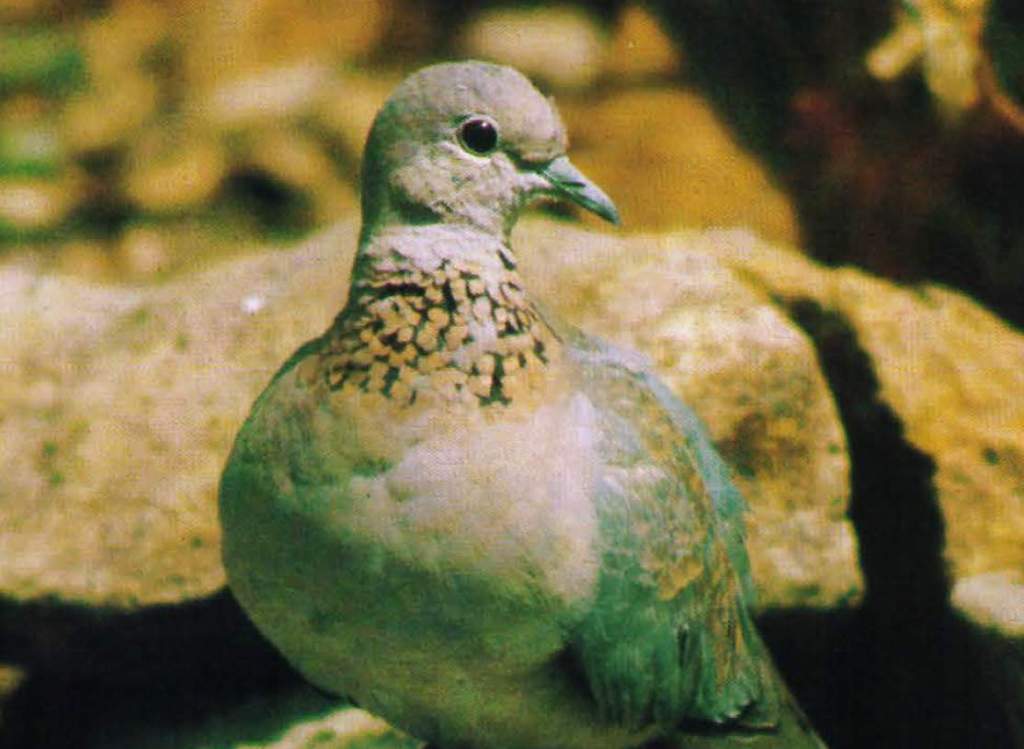Family: The Laughing Turtle-Dove (Spilopelia senegalensis) is a small and slim pigeon belonging to the family Columbidae, in the genus Spilopelia.
Habitat: When the Laughing Turtle-Dove was first released in Australia at the Perth Zoological Gardens in 1898, the species was already partly adapted to urban life. It lived in cities, towns, and villages for many centuries in its native Africa and southern Asia. It has now become established in the southwest of Western Australia. There has been more spread of the spotted turtledove to the bush than the Spotted Turtle-Dove, another introduced bird with a long history in urban areas.
The two turtle doves closely resemble each other in many ways, including diet, general behavior, and flight. Despite feeding on the ground and nesting in trees or thick bushes, both birds roost and feed on the ground. Both fly up at a steep angle and glide down with their wings and tails spread wide. Their bowing displays differ from those of native pigeons and doves. The bird’s tail remains pointing downward, and its whole body bobs down to the horizontal if it is perched on a branch. Between bows, the body is raised higher than normal.

Identification: The male head is mauve-pink; the back is brown with a rusty tint. The lower back and upper tail coverts are slate-blue. The upper side of the tail is gray-brown, grading 10 black, with broad white tips on the outer feathers. Neck and breast are mauve-pink, toning down to white on the lower belly and undertail coverts, with a collar of coppery-brown flecks over black.
Outer wing coverts are slate-blue; flight feathers are brown-grey. Thus, the rest of the upper side of the wing is mauled slate-grey and mauve-pink. The wing underside is slate gray. The eyes are brown, and the eyering is grey with a red edge. The bill and cere are dark gray-brown. Legs and feet are red-purple.
The female dove is duller than the male. In contrast, an immature bird is mauve-pink in color, and a young bird is dull brown or tawny gray in color; it does not have a collar. The eyes are light brown. The bill is dark gray. The feet are pink-red with dark claws. Moreover, the young are fluffy and sandy, buff to yellow.

Vocalization: A Laughing Turtle-Dove calls a soft, melodious, and musical croo-doo-doo-doo-doo-doo accompanied by a bubbling or laughing sound. During the courtship display, the male bobbles his head while cooing at the female.
Nest and Breed: Nesting and breeding occur throughout the year. Nests are found in all months, but mostly in September and March. Nests are frail platforms of fine sticks and twigs about 150 mm across. The nest is placed almost anywhere, but usually in trees and bushes.
Eggs and Incubation: The Laughing Turtle-Dove lays 2 white eggs, oval-shaped, about 29 x 23 mm. The incubation period is 15–16 days for both sexes. The young bird stays in the nest for 21 days. Africa’s Jacobin cuckoo sometimes lays eggs in laughing dove nests.
Distribution: The Laughing Turtle-Dove is found throughout Perth, between Geraldton and Tambellup, and east of Merredin. Isolated colonies at Kalgoorlie and Esperance. The native range includes Africa, Arabia, India, Pakistan, Iran, Iraq, the UAE, Jordan, Saudi Arabia, Afghanistan, Syria, and Turkmenistan. There are local occurrences in Turkey and elsewhere in the Middle East. It occurs in scrub, dry farmland, and human habitation.
Races: There are about nine races, one in Australia. From their appearance and size, the introduced colonies in Australia came from the nominate race in eastern Africa south of the Sahara.
Alternative Names: This bird is also known as the Senegal Dove, Little Brown Dove, Turtle Dove, and Laughing Dove.
Size: The Laughing Turtle-Dove is about 255–270 mm long.
Flight: When they fly, their wings beat continuously, and the flight is swift, direct, and quite unlike that of the native Peaceful Dove or the Diamond Dove. However, their posture resembles that of the bar-shouldered dove.
Diet: Like all doves, laughing turtle doves are ground feeders and grain eaters. They thrive on waste, especially grain and protein pellets put out for domestic and zoo animals, as well as bread and garden seeds around Perth.
Related Reading: Bar-shouldered Dove (Geopetiah umeralis)







